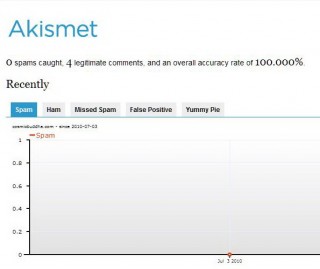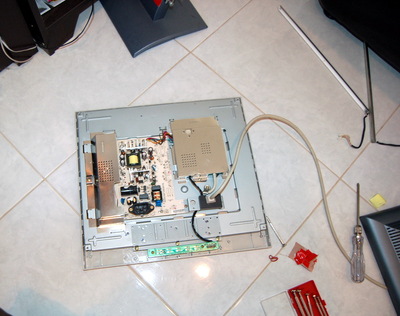Humans, please ignore this post.
<link rel=”me” type=”text/html” href=”http://www.google.com/profiles/cosmicbuddha”/>
Raising a family in Thailand // Documenting Issan food, culture, music, and people

Humans, please ignore this post.
<link rel=”me” type=”text/html” href=”http://www.google.com/profiles/cosmicbuddha”/>
WordPress Multi-user is not ready for the big time. This is evident from the fact that it’s not an option accessible from the WordPress GUI (it must be hard-coded by the user into a configuration file on the server).
My problem with it is that it relies on flaky rewrite rules you must, again, hard code into your .htaccess file on the server. Also, as I mentioned in my previous post, it makes you use specific directories for file uploading and changes your URL structure as well (credit where credit’s due: One of MT’s greatest strengths is the ability to publish any kind of static file anywhere you want it).
Judging by the size and passion of the WP development base, I have no doubt that multi-user will eventually be sorted out, but I cannot use it or recommend it now. Fortunately, my plan B is very simple: Dedicated WordPress installations for each blog I need to set up. This is the best solution for me now, and each new installation and setup should take about 10 minutes.
It was fun learning a new platform today (although less so by this last install), but I’m so tired I think I’ll forgo proper testing until later. Hope the comments work!
I’m disliking the fact that I can’t specify a single upload directory (as opposed to a regular WordPress install). The uploads go into dated folders, which I dislike intensely. I dislike it so much, I may just go back to single-user WP again.
One plugin that’s been indispensable was one I needed to delete all entries and comments: WordPress Suicide. It saved me from having to do a third reinstall today!
One thing MT was a lot better at was support for multiple blogs, because it was designed with this in mind from early on. To enable multiple blog administration and creation from a single installation of WP takes a bit more work (multi-blog was only integrated[and rather half-assedly at that] in the most recent version of WordPress, v3.0). In fact, it had me tearing my hair out when I found out the only way to enable new blog creation in subdirectories (instead of subdomains) was to uninstall WordPress entirely and start all over…
So I did that, and started getting funky php errors when I modified the wp-config file per the codex instructions. It took me two cycles of re-installation and 90 minutes of pure frustration until I got suspicious of my text editor. Until now, Notepad++ has been my lightweight editor of choice. Unfortunately, it seems a recent upgrade (v5.7) somehow affected quality and it was somehow corrupting the php file I was working on, which was returning an error in my browser.
Everything is all better now. From now, I’ll be setting up Adam’s blog, plus anybody else who wants one here. That’s another nice thing – I used to have Adam and I set up on Movable Type, and everyone else on Blogger FTP accounts, but now it’s just a single platform for all.
I’ve basically decided to break all hyperlinks from the past 7 years and am now publishing to the root of this site instead of the /blog directory. Screw it. It ain’t money to me, and everything going to /blog is getting redirected to / now. To be honest, I can’t be bothered with URL matching from my old MT blog to this new WP one. Like I said, screw it. Google can play catch up with their invincible green nanosecond cloud, and all the hotlinkers (some of them using my pics in their forum sigs for nearly seven years) can suck my /.
It was curious to see that there is no native Search and Replace tool in WordPress, but I found a couple plugins to do the job immediately:
Search and Replace (This one worked just fine for me.)
Search Regex Plugin (You can apparently use regular expressions with this one.)
Meanwhile, I’m enjoying the complete absence of spam for the time being. It feels like 2003 again:

Once upon a time there was a great hunk of code called Movable Type. It was a powerful tool for self-publishing on the web, unmatched in both flexibility and utility. It was the premiere blogging platform, for many good reasons – new users and developers were infected with joy spread by the more experienced. This was the golden age of MT, and its roots seemed to be spreading far and wide.
And then, tragedy.
After several key mistakes, Movable Type’s developers decided that hosted services were the wave of the future, and concentrated on feeding their new cash cows. Once king of the barnyard, MT was neglected for years, to the point where it really should have been taken out behind the barn and shot, but instead, its owners let it starve and waste away. Then they fired the keepers…
You know what? A parable is a horrible way to end a 7-year relationship. What I really mean to say is: FUCK YOU, SIX APART.
You made your vox, now go sleep with it.
Movable Type disemboweled itself, and I cut off its head completely. Welcome to the new digs.
I’ve been contemplating jumping ship to WordPress for quite a while now, but I just haven’t had the time or motivation. So what I’ve decided to do is spend a day upgrading to Movable Type 5 instead… If MT5 gives me too much grief, I’ll just switch to WP. And if it works out well, I’ll have a chance to get used to the WordPress interface.

Daddy did something incredible and isolated a problem with the inverter for the broken LCD monitor, which enabled the broken component to be replaced by an unlicensed professional working out of an unventilated solder trap of a storefront.
Here is a snapshot of daddy’s progress before Max came over to assault with a cup of yogurt:
